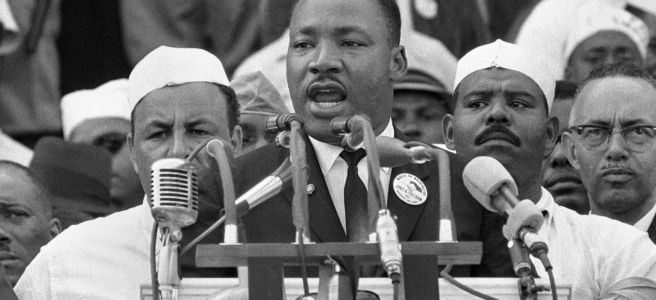April 27, 2024
Free the Israeli hostages. Hamas is a terrorists organization. Israel has a right to exist. Also, no Jewish college student should be made to feel unsafe because they are Jewish, including at my alma mater, Emory University. I wanted to get that out of the way before someone on Fox News accuses me of anti-Semitism. As someone who has dedicated his entire adult life to studying and combatting neo-Nazism, I think I have a pretty good feel for what anti-Semitism is and there is an alarming lot of it, but the de facto defending of the right of Palestinians to live is not anti-Semitism. But I’m not Jewish, so I might be missing things that don’t look anti-Semitic but feel anti-Semitic.
I’m writing this on the fifth anniversary of the Poway synagogue shooting. On April 27, 2019, a 19-year-old white supremacist walked into the Chabad of Poway synagogue in San Diego and opened fire, with an AR-15 rifle, on the last day of Passover. He killed one woman and injured three others, including the rabbi. Before the shooting, he posted a manifesto on 8chan that claimed Jews “meticulously planned genocide of the European race.” Because he was inspired by the Christchurch mosque shootings that had resulted in 51 deaths in New Zealand a month earlier, the killer had attempted to burn down a mosque in Escondido before his deadly shooting spree in Poway.
Last week, I sat in on an ADL webinar that shared that anti-Semitic incidents in 2023 increased 140 percent over those reported in 2022, spiking after the Hamas attack in Israel. If I’ve learned one thing in the 30+ years I’ve done this work, it’s that racists and neo-Nazis are opportunists. When Hamas attacked Israel on October 7, 2023, killing 767 civilians (including 36 children), they saw a massive opportunity. So how do I speak about the over 38,000 Palestinian civilians (including nearly 16,000 children) killed by Israel in their war on Hamas without being pulled into the black hole of anti-Semitism?
It’s sickeningly clear that the far right is coming at this issue from both sides. On one side, it has injected anti-Semitic tropes and conspiracy theories into a part of the pro-Palestinian movement. (We can debate how big or small that part is.) They’ve also utilized the claim of “anti-Semitism” to shut down sincere protests to defend the human rights of Palestinians, that can include the accusation that Israel has committed war crimes in Gaza (which was alleged by the United Nations last month).
I feel the need to point out four basic assertions:
Thing 1: A firm critique of the policies of the government of Israel is not anti-Semitism. Being critical of the misogynistic policies of the Taliban in Afghanistan does not make one Islamophobic. There are countless Jews, both inside and outside of Israel, who oppose the wholesale slaughter of Palestinians in Gaza and reject the actions of Bibi Netanyahu. Are those Jews anti-Semitic?
Thing 2: The core tenant of anti-Semitism is that Jewish people, as a group, have some secret control of the world (banks, the media, government, hip hop, etc.) that shapes global events. It is completely possible to see Israel’s military campaign as an action of a sovereign nation and not an operation of a “global cabal” of “evil Jews.”
Thing 3: The heartbreaking spike in anti-Semitic incidents and crimes has been paralleled by an equally heartbreaking spike in anti-Muslim incidents and crimes, including the murder of Wadea al-Fayoume, a 6-year-old Palestinian boy in Illinois who was stabbed 26 times by his landlord who had been listening to conservative radio following the October 7 attack.
Thing 4: The vast majority of the deaths caused by the Israel Defense Forces (IDF) have been civilians, including women and children, who are not members of Hamas, and have not resulted in the liberation of Israeli hostages. Additionally, the created famine and destruction of schools, hospitals, and infrastructure in Gaza has not resulted in the freeing of Israeli hostages.
Having said all that, we cannot deny anti-Semitism has been witnessed in pro-Palestine protests in two ways.
First is the idea that a free Palestine requires the elimination of the state of Israel. There are many, including myself and President Biden, who believe a “two state solution” is the most rational way out of this mess. But those who chant, “From the river to sea, Palestine will be free!” do not see Israel existing in that vision. (Although, I’m willing to bet a lot of the college students chanting that have no idea were the Jordan River is. Americans are pretty stupid when it comes to geography.) You know who also wants the destruction of Israel? Hamas and neo-Nazis.
The second issue is how Jews in general (including Jewish Americans) are scapegoated for policies of the government of Israel. While there are significant numbers of American Jews who are in the streets and college quads protesting for the human rights of Palestinians, that any Jewish person be made to feel unsafe or targeted for the policies of government over 6000 miles away is the definition of irrational. But Jews have long have been the target of irrational scapegoating, including by one well known anti-Semite, Adolf Hitler.
I remember what it feels like to be young and righteous. When I was an undergraduate at Emory, our issue was apartheid in South Africa. Like the students there now, we set up a shantytown on the quad and called for the university to divest from the country. Emory was built on Coca-Cola money and Coke had plenty of operations in South Africa. (In 1986, Coca-Cola pulled out of South Africa. You’re welcome.) Is the movement to divest from Israeli “apartheid” the same situation? As an undergrad in 2024, I might see the similarities. I also might get caught up in the chants and rallies the blur the lines between anti-Netanyahu-ism and anti-Zionism. But utilizing police to crush the protests doesn’t help protestors (including well-meaning college students) to better understand the complexities of this issue. I’ll tell you this, when the cops came for us in the 1980s, it further radicalized my position as I dug my heels in for the long fight. These protests seem the perfect opportunity to widen the conversation, centering both Jewish and Palestinian voices. (Note: Not all Gaza residents are Muslim. There is a small Christian population there. And probably a few Goths.) Police crackdowns silence the discussion.
This could be a lengthy tome about the need to find a “middle ground” in this crisis. That talk does not serve the children of Gaza, who face the same certainty of death from Israeli rockets that the children of Ukraine face from Russian rockets. Those kids don’t know about Hamas or Israel’s tortured history in a hostile landscape. That call for compromise would also not soothe the families of the 133 Israeli hostages still being held in some God-forsaken hellhole. That is not the intent.
The intent is highlight how the very powerful charge of anti-Semitism has been weaponized to shut down calls for a cease fire, calls to stop the slaughter, calls to choose policies that don’t result in human carnage. Some Americans are afraid to oppose the war out of fear of being labeled anti-Jewish. As I said when this thing started last fall, it is possible to be both pro-Palestine and pro-Israel. The deep emotional nature of this conflict obscures what should be ethical clarity. I will leave it to the psychoanalysts to determine if Jewish trauma is now being levied on Palestine. I will leave it to the philosophers to determine if genocide is a defense against genocide. (And if “genocide” is even an accurate term.) I just want to hold space where we are allowed to express our outrage and sadness for what we continue to do to each other. Stop the killing.











































